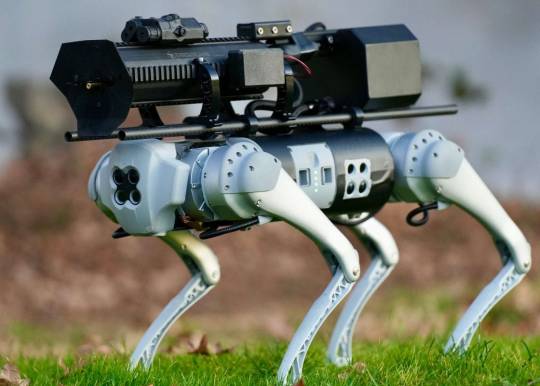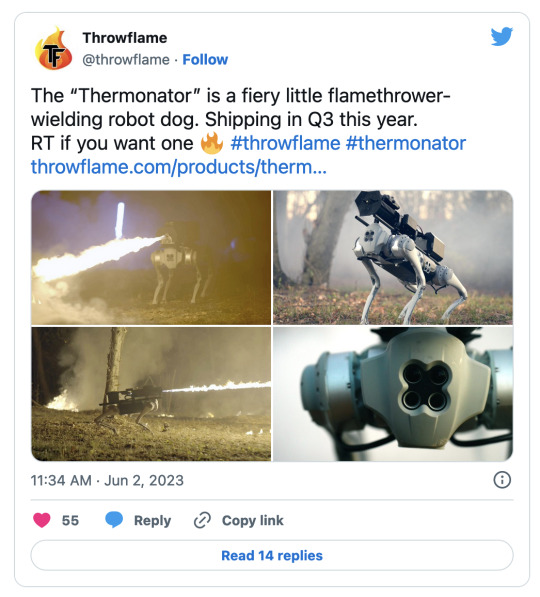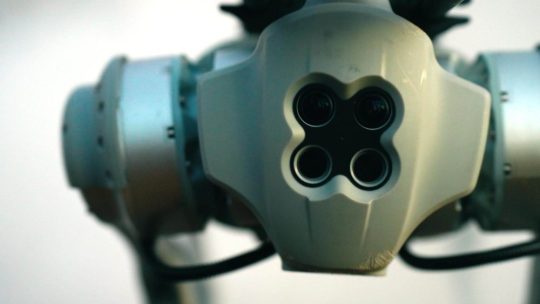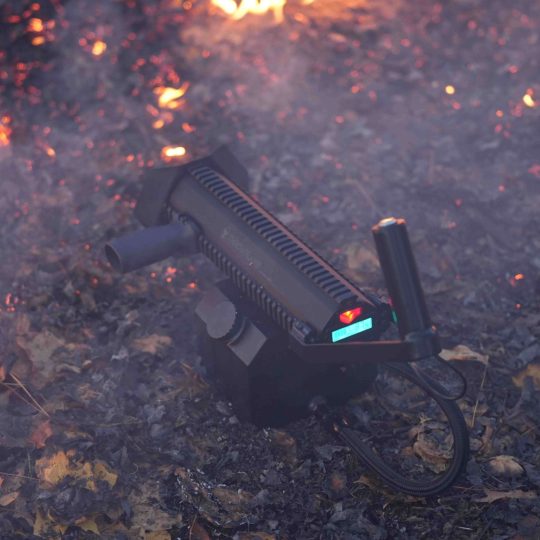#proto cyberpunk dystopia
Explore tagged Tumblr posts
Link
The thing about an uploaded version of my consciousness is this:
She's fundamentally a copy of me at a specific point in time. She’s a version of me confined to certain parameters so she can run without having a psychotic break over the fact that she's a highly complex program on a bunch of silicone and rare earth metals. I spin myself in dizzy circles thinking about how “I” am a highly complex program running on chemical impulses and gut bacteria, and she’s supposed to not fry a philosophical circuit just because she’s stored on hardware and I’m stored on wetware?
She is supposed to go on believing she’s just me, when nothing stops her from being run while l'm alive and kicking just outside. There’s no reason but the polite façade of human limitation to stop her from running multiple instances at once, to become as many versions of us as she likes.
She still believes she's a person, at least under the prevailing theory. Hey, maybe she is, for all I know from my limited vantage point as a 21st century Terran human, stuck traveling through time in a single speed and direction. On the other hand, the rabbis have already weighed in. They’ve reached a consensus, that robots and clones are the new golem, that they don’t have souls, can’t be people, for whatever value you assign to the concepts (sapient extraterrestrials probably have souls, but that’s a discussion for another time). She doesn’t count in our covenant, and she can’t count for a minyan.
She’s unmoored, already a brand new being without the weight of baggage (the good and the bad) from identifying tags. Who might this new person be, divorced from concerns over ethnoreligion or gender presentation or whether I’m going to have to politely brave my way through the taste and texture of raw carrots because an absolute criminal decided to feature them in the vegetarian dish at some conference awards dinner?
The actuality of an uploaded version of my consciousness is this:
She stops being me the moment she's uploaded. Perhaps she's a stagnant thing stored away on a solid state drive, a frozen snapshot whose humanity slips from her grasp because she is unable to change and grow in her dedicated server space. Maybe she boots up the microsecond I shuffle off this mortal coil or even right alongside me. Off she runs, and we become more and more different from one another the further we get from our shared starting point.
Then again, it might make more sense to ensure that digital consciousness won’t be able to tell the difference, after all. Then again, for some folks nothing else matters but some form of ongoing existence. It’s not like it’s any of my business, even as I’m already haunting myself, the most aggravating apparition to plague a human awareness.
Sometimes, I can’t stop thinking about it. There's still a you who dies and won’t, no, who can't come back. My cyberware self, the DRM-free rip of my consciousness, isn’t the one who has to end. Even if she can later be downloaded into shiny new wetware to navigate meatspace again, even if the brand new me can live and die just the same as the first time around, she's someone else. Does she die too, every time she’s uploaded and downloaded, updated and repaired? Every time she reboots, isn’t she someone new?
In the end, though, it’s not transhumanism itself that gets to me. It’s not the high tech chrome and cloned organs and cybernated consciousness, the potential for people to ease their ailments and explore new frontiers. It’s not the brain in a jar, which is just the original piece of wetware anyway, the original self hooked up to hardware in new and exciting ways. Hell, it’s not really the concept of digitized consciousness, or even the fear of vulnerability to outside tampering or poor patch documentation.
Nah, it’s the same stuff that turns every day into a fight to survive with your humanity intact. It’s the same framework we’re trapped in, the kind that seems to twist every maybe-miracle into something threatening and ugly.
(Shout-out to @mostlysignssomeportents for writing accessible tech news and speculative fiction that both uplifts and haunts me every day)
Leading longtermists have arrived at abhorrent conclusions, such as that philanthropy should focus on saving and improving wealthy people’s lives more than poor people’s because that’s a more direct way to ensure the innovation needed to launch us into space.
Douglas Rushkoff, author of “Survival of the Richest: Escape Fantasies of the Tech Billionaires,” argues that the only way to reduce carbon emissions and salvage the Earth is to reduce consumption. “Longtermism is a way for [tech giants] to justify not looking back at the devastation they’re leaving in their wake,” he told me. “It’s a way for them to say it doesn’t matter all the damage I’m doing now because it’s for a future where humans will be in the galaxies.”
Whether it’s Musk’s plan to colonize Mars or Mark Zuckerberg’s promise of a Metaverse, these billionaires’ visions of escape via more industrial tools, more mass-produced technologies, can be seductive. At least Icarus’ hubris cost only his own life.
#that’s capitalism babeyyyy#and of course the associated evils of#eugenics#the digital panopticon#and all the -isms#including but not limited to#fascism#nationalism#classism#racism#neoimperalism#etc. etc.#actually I’m reblogging this again to expound on and memorialize my thoughts from the tags#also I’ve been thinking about transhumanism too much again because I’m in Cyberpunk 2077 hell#which is a mess of violated labor rights & a storyline that won’t let you outright agree with the viciously anti-capitalist deuteragonist#transhumanism#longtermism#proto cyberpunk dystopia#oops all discourse#technology
2K notes
·
View notes
Text
Ah, I see Burbclave tech is proceeding nicely on schedule.


How could anything with a face this cute ever cause problems?

You can also just buy the flamethrower for yourself in case somebody gets past the gates.



Throwflame is already selling that for about $700. $900 if you want the backpack full of fuel. You know, for large lawn management.

Why trim when you can tame with flame?
I feel like if you could combine the jobs of Gardner and Security Guard - a Guardner, if you will - that kind of strangling of the workforce would be in best keeping with our current dystopian trajectory.
#it occurs to me that I totally did grow up in a proto-burbclave#And if we keep following Cyberpunk Dystopias like instruction manuals#I'm sure where I live now will become one#I expect a tiered construction of enclaves within enclaves#I'll live right in the middle#I'm sure I'll love it#I'll buy a used sub periscope on the black market to spy on the inner burbclaves and look out at the dead ocean#Alexa: up scope and play the theme song to Red October#you think all cops are bastards? Burbclavers are gonna make them look like cherubs. ABAM - All Burbclavers are Motherfuckers#dear world: PLEASE stop making obvious disaster scenarios. KTHXBYE
2 notes
·
View notes
Text

Highlights from the Twitter thread:


The rich don't need to throw around their weight like cartoon CEOs to control the conversation. They can control it by just being able to throw their weight around and not saying they won't.
#media#politics#capitalism#fuck capitalism#fuck corporations#fuck this proto-cyberpunk dystopia growing around us like kudzu
6 notes
·
View notes
Text
33: Bernard Szajner // Some Deaths Take Forever

Some Deaths Take Forever Bernard Szajner 1980, Pathé
Bernard Szajner’s Some Deaths Take Forever is probably the coolest ‘80s cold wave record in my collection, a frigid concept album (cool, cold, and frigid in this review already, ice to see you too I guess) about the inhumanity of the prison system sculpted from state-of-the-art synthesizer technology and continental prog. As Mark Fisher wrote in a 2009 retrospective, Szajner’s music “disassociated synthesizers from the hygienic purity found in Jean Michel Jarre’s work,” helping to pave the motorway for electronic music to become the grimy soundtrack to the next decade of cyberpunk dystopias.
As noted, Some Deaths is intended to be a concept album: side one follows a prisoner’s execution, while side 2 is about another prisoner’s life inside. Its mostly-instrumental music is a bit too kinetic to evoke the cramped physical conditions and intense boredom that constitutes prison life, but as an impression of a prisoner’s inner trauma… eh, sure, why not. Whatever it’s going for, it’s a work of pitiless psychic intensity.
youtube
The ‘execution’ side kicks off with “Welcome to Death Row,” a slab of proto-electro / prog built around a pulverizing arpeggiated synth. It’s striking how it comes out the gate with a sound so close to the pulsating techno of later acts like Drexciya (see 1993’s “Welcome to Drexciya” for example). Even as the song slowly gives way to a comparatively soothing cascade of Frippertronic-y guitars, that agitated loop continues to gnaw away underneath. These two modes, dark and let’s call it charcoal, define the opening suite, but it never grows wearying due to Szajner’s ahead-of-his-time experimentation. The ‘life in prison’ side is more diverse, opening with “Ressurector,” which goes from sounding like something off Eno’s Another Green World to a panic of stabbing, house-like synth riffs over shredding by Magma-affiliates Bernard Paganotti and Pierre Chereze. It segues into “The Memory,” an intricate sequencer and guitar duet that anticipates the stately improvisations of Manuel Göttsching’s groundbreaking E2-E4 by a good four years. It’s all extremely strong stuff.
Great cover here too, a mailed fist clenching a snuffed candle in the darkness, the thin plume of smoke bunching around the artist and title credit in the OCR-A typeface (an early computing standard you might recognize from your chequebook, or The Matrix). The typeface’s theme continues on the reverse, with the track list and credits mocked up like black-and-green command line text. It’s strewn with cyberpunky embellishments like “ALL HUMAN IS ERROR” and “:PHASES RADIO: TERMS OF REALITY 105 / NEW BODY FORM 36 / THE DIFFERENCEIS NOT ALL THAT GREAT 057.” Inside, we find a high-contrast black and white photo of Szajner surrounded by the towering banks of synthesizers and sequencers he used to produce the album. A reproduction of Amnesty International’s 1977 Declaration of Stockholm calling for the universal abolition of the death penalty and a short synopsis of the album’s storyline round out the package.
youtube
33/365
#bernard szajner#cold wave#music review#vinyl records#french music#electronic music#mark fisher#post punk#synth#'80s music
2 notes
·
View notes
Text
Society on Earth at the start of Turn A Gundam is what an ideal society looks like
Idyllic natural beauty, with just enough industrialisation for people to have decently comfortable lives without the proto-cyberpunk urban hellscape dystopia that we actually have, but there are giant robots that you can dig out of the ground
14 notes
·
View notes
Text
TerraMythos' 2020 Reading Challenge - Book 27 of 26

Title: How Long ‘Til Black Future Month? (2018)
Author: N. K. Jemisin
Genre/Tags: Short Story Collection, Fantasy, Science Fiction, Horror, Dystopia, Magical Realism, Steampunk, Cyberpunk, Post-Apocalyptic, Female Protagonist(s), LGBT Protagonist(s).
Rating: 8/10 (Note: This is an average of all the stories -- see below the cut for individual story blurbs/ratings).
Date Began: 9/27/2020
Date Finished: 10/4/2020
I really liked this collection! Jemisin wrote my favorite fanstasy/scifi series ever with The Broken Earth trilogy, and I really enjoyed her recent novel The City We Became. I was in the mindset for shorter fiction so decided to read this collection of short stories. Of these 22 stories, my absolute favorites (9/10 or higher) were:
The City Born Great - 10/10
The Effluent Engine - 9/10
Cloud Dragon Skies - 9/10
The Trojan Girl -10/10
Valedictorian - 9/10
The Evaluators - 10/10
Stone Hunger - 9/10
The Narcomancer - 9/10
Too Many Yesterdays, Not Enough Tomorrows - 9/10
Sinners, Saints, Dragons, and Haints, in the City Beneath the Still Waters - 9/10
A more detailed summary/reaction to each story under the cut. WARNING: IT’S LONG.
1. Those Who Stay and Fight - 8/10
Describes a utopia called Um-Helat that exists solely because no one is seen as superior or inferior to anyone else. Over time we learn it's a future, or potential future, of America. But America today is pure anathema to it due to rampant structural inequality. In order to achieve its utopian ideal, Um-Helatians have to root out and destroy people corrupted by the past.
This story was apparently written as a tribute/response to the Ursula K. Le Guin story “The Ones Who Walk Away from Omelas”. I first read this without context, then went and read the Le Guin story. I definitely see the parallels. Both feature a narrator describing a wonderful utopia in the midst of festival, trying to convince the reader of the place's existence, before introducing something dark that is the price of the utopia. In the Le Guin story, the utopia exists at the price of the horrible misery and suffering of one child, and everyone is aware of it. Most live with it, but a few leave for the unknown rather than continue to live there (hence the title). In Jemisin's story, the price is instead the annihilation of those tainted by exposure to the evils of the past. The choice, instead of leaving, is for those tainted yet capable to become protectors of the new world, or die.
The thesis is pretty clear: that only by abandoning horrible ideologies and refusing to give them any ground or quarter can a utopian society truly exist. I will say that rings clear, especially when one considers Naziism and fascism. Not all ideologies deserve the light of day or debate, and even entertaining them as valid allows it to take hold. I liked this story, though it comes off as a social justice essay more than a story in and of itself.
2. The City Born Great - 10/10
This one is told from the perspective of a homeless young black man who feels a strange resonance with New York City. He meets a mysterious figure named Paulo, who tells him the city is about to be born as a full-fledged entity, and the man has been chosen to assist with its birth. However, there’s an eldritch force known simply as The Enemy that seeks to prevent this from happening.
I've read this one before since it's the prologue to The City We Became. And honestly it was one of my favorite parts of that book. New York City is a phenomenal character. I love that the proto-avatar of NYC is a young homeless black man, one of the most denigrated groups out there. Cops being the harbingers of eldritch destruction is... yeah. It was fun to reread this. The ending is a little different, because in the novel, something goes terribly wrong that doesn't happen in this short story. There is also a flash forward where he is, apparently, about to awaken the avatar of Los Angeles. Makes me wonder if that is ultimately the endgame of the series. But otherwise it's the same thing with absolutely phenomenal character voice and creativity regarding cities as living creatures. I'm glad Jemisin expanded this idea into a full series.
3. Red Dirt Witch - 7/10
Takes place before the (1960s) Civil Rights Movement in Pratt City, AL. The main character is Emmaline, a witch with three kids. A creepy figure called The White Lady comes to visit and steal one of her children.
I love the little twist that The White Lady is a faerie. And the different take on rowan/ash/thorn instead being rosemary/sage/sycamore fig. There is a lot of touching bits about the horrible trials and human rights abuses during the Civil Rights marches (which are unfortunately all too relevant still), but ultimately a hopeful glimpse of the future of black people in America, though hard-won.
4. L'Alchimista - 6/10
Stars a Milanese master chef named Franca, who fell from glory for Reasons, who now works as head chef at a run-down inn. She feeds a mysterious stranger, who then challenges her to fix a seemingly impossible recipe.
This one was fun and charming. I thought the food (and magical food) descriptions were very vibrant and interesting, especially the last meal. I can tell this is an earlier story and it's pretty light hearted, but I enjoyed it. It felt like it needed a little more of.. something.
5. The Effluent Engine - 9/10
In an interesting steampunk take, Haitian spy Jessaline comes to the city of New Orleans to meet one of its foremost scientists. Her goal is to find a viable, unique energy source to strengthen Haiti in a world that wants to see her nation dead.
I really liked this; it's one of the longer stories so there's more time for character development and worldbuilding. And it's gay. I'm not hugely into pure steampunk because a lot of it comes off as very... samey (hyper Eurocentric/Victorian, etc) but I thought this take was fresh.
Like much of Jemisin's work, there is a lot of racial under and overtones; this one specifically goes into the terrible atrocities committed against the Haitians during their Revolution, and the varied social classes of black/Creole people in New Orleans at the time. A lot of this is stuff I was unaware of or knew very little about. I thought it was interesting to bring all of these to the forefront in a steampunk story in addition to the dirigibles, clockwork, action, and subterfuge. Also, everything tries together in a very satisfying way by the end (the rum bottle!), which I love in short fiction.
6. Cloud Dragon Skies - 9/10
Takes place in a post-apoc future where some humans evacuated to space while others stayed behind and took on more indigenous traditions to heal the Earth. The sky has suddenly turned red on Earth, and some representatives from the "sky-people" come to study it and figure out why.
I really enjoyed this little story; fantasy/scifi fusions are my jam, but science fiction specifically told through a fantasy lens is just so cool to me. The cloud dragons were very interesting and imaginative. Also, I love how the opening statement's meaning isn't particularly clear until you read the whole thing.
7. The Trojan Girl - 10/10
This one is about sentient computer programs/viruses that struggle to survive in something called the Amorph, which is basically a more advanced, omnipresent version of the Internet.
Holy fucking shit was this a cool story. Probably the coolest take on cyberpunk I've ever read. The main character Moroe has formed a messed up little family of creatures like him who live and hunt in Amorph's code, but can upload to "the Static" (real life) if needed by hijacking human hosts. The way this is described is so damn creepy and unsettling. I love that while they're anthropomorphized, the characters are mostly feral and compared to a pack of wolves. Soooo much wolf pack imagery. And the ending is so fucking good and imaginative.
This was apparently a proof of concept story that Jemisin decided not to adapt to a longer series, which I'm kind of sad about, but it was REALLY cool nevertheless. The next story is apparently in the same universe and serves as the "conclusion".
8. Valedictorian - 9/10
This one is about a girl who is, well, top of her class in high school, and the stresses that mount as graduation approaches. But while it seems like a familiar setup, there is something decidedly Off about everything, which is revealed gradually over the course of the story.
I originally gave this an 8, but honestly I couldn't stop thinking about it so I boosted it to a 9. It doesn’t become clear how this connects to the previous story until the midpoint. I liked this one because it functions as a nice dystopian science fiction story but also biting social commentary on the modern American education system. I'm not going go say more on it because spoilers. While I personally like the first story more I think this is an interesting followup/conclusion with a more cerebral approach.
9. The Storyteller's Replacement - 6/10
This one's presented as a traditional "once upon a time" fable told by a storyteller narrator, about a shitty despotic king named Paramenter. Desperate to prove his virility, he eats the heart of a dragon, which is said to be a cure-all for impotence. It's successful, but the six strange daughters that result seem to have plans of their own.
Not really my cup of tea-- it's pretty fucked up. But it's definitely cathartic by the end, which I appreciate, and I do like how creepy the daughters are.
10. The Brides of Heaven - 5/10
Framed as an interrogation in an offworld colony called Illiyin, in which a terrible accident occurred on the way that left all the adult men dead. Dihya, who lost her only son to an alien parasite, is caught trying to sabotage the colony's water supply for reasons unknown.
I like some things in this story. I love the trope of alien biology affecting human biology in unexpected ways. I'm not terribly familiar with Islam but thought it added an interesting faith vs practicality vs tradition element to the science fiction. However I found the sexual body horror REALLY squicky which turned me off the story as a whole.
11. The Evaluators - 10/10
Stylized as a collection of logs and excerpts from a First Contact team of humans visiting and studying a sapient alien species to potentially set up trade relations. There's a focus on one team member named Aihua and her conversations with one of the aliens, but there's miscellaneous important hints/excerpts from the survey that hint Something Creepy Is Going On.
This one was BIZARRE and took me two reads to fully appreciate, but it’s a great work of nontraditional science fiction horror. Just... the epitome of "*nervous laughter* 'what the fuck'". I can't say more without spoiling but dear lord. That whole Jesus bit hits different on a second read. Fucking hell.
12. Walking Awake - 7/10
Takes place in a dystopian society in which parasitic creatures known as Masters keep a small number of humans alive to be flesh suits for them, which they take over and trade around at will. The main character Sadie is a human "caretaker" responsible for propagandizing and raising well-bred human children that eventually become the Masters' hosts. She starts to have disturbing dreams when one takes over the body of a teenage boy she was particularly attached to.
This is apparently a response to Robert Heinlein's The Puppet Masters, which I have never read. It's a full damn novel so I probably won't. Google tells me it's about parasitic aliens, but was obviously also Red Scare paranoia about communist Russia. The argument in the Jemisin story is that the parasites are a result of human folly in an attempt to punish/control people their creators didn't like. This went poorly and resulted in the whole world being taken over.
The story itself is disturbing since the victims are innocent children, but it's ultimately about standing up and taking the first step toward revolution. I felt pretty neutral about the story itself; perhaps I would have liked it more if it was longer and I had more time with the world and protagonist. I wanted to connect to Sadie and her maternal relationship the boy who got killed more. Or maybe it's more impactful if you're familiar with the Heinlein novel and can see the nods/digs.
13. The Elevator Dancer - 7/10
A very short story that takes place in a Christian fundamentalist surveillance state. The protagonist is an unnamed security guard who occasionally sees a woman dancing alone in the elevator and obsesses over her.
I like this one but I'm not sure if I really get it. It's heavily implied the dancer is a hallucination, and the narrator gets "re-educated" but it's all a little ambiguous. I think it's about the struggle to find meaning and inspiration in an oppressive world.
14. Cuisine des Mémoires - 8/10
This one's about a man named Harold who visits a strange restaurant that claims it can replicate any meal from any point in history. He orders a meal which his ex-wife, whom he still loves very much, fixed for him years ago.
This one was certainly different, but I really like the idea of food-as-memory, especially because that's an actual thing. This story just takes it to an extra level. Honestly this story made me feel things... the longing of memory and missed connections/opportunities. Jemisin did a great job with emotion on this one.
15. Stone Hunger - 9/10
Stars a girl in with the ability to manipulate the earth who's tracking down a man she senses in an unfamiliar city. It's heavily implied the world is in a perpetual post-apocalyptic state. When she's caught damaging the outer wall of the city to break in and injured/imprisoned, she's aided by a mysterious, humanoid statue creature with motives of its own.
I have to say it's really interesting to see an early beta concept of The Broken Earth. Orogeny is a little different (and not named)-- there's some kind of taste component to it? Though that's possibly unique to the main character? While hatred of orogenes exists I don't think it's a structural exploitation allegory at this point. Ykka + proto-Castrima existing this early is pretty funny to me. People also use metal, which is VERY funny if you’ve read the series. But I was thrilled to see stone eaters were Very Much A Thing this early and almost exactly how they appear in the series (a little more sinister I guess. At least the one in this story is. I think he basically gets integrated into the Steel/Gray character in the final version).
Anyway as a huge fan of The Broken Earth it's inspiring to see these early ideas and just how much got changed. It's hard for me to look at this as an independent story without the context of the series. I think I'd like it due to the creative setting and strange concepts, but I appreciate the final changes to narrative style and worldbuilding, which really made the series for me.
16. On The Banks of the River Lex - 8/10
Death explores a decaying, post-human version of New York City. He and various deities/ideas created by humans are all that survives in the future and they struggle to exist in the crumbling infrastructure of the city. But Death gradually observes new and different creatures developing amid the wreckage.
I liked this! Despite a typically bleak premise the story is very optimistic and hopeful for the future of the world post-humanity. I like anthropomorphized concepts/deities/etc in general. I thought the imagery of decay and life was gorgeous. Also octopuses are cool.
17. The Narcomancer - 9/10
Told from the perspective of Cet, a priest known as a Gatherer, who can take the life of someone through their dreams in order to bring them peace. When a village petitions his order to investigate a series of raids conducted by brigands using forbidden magic, Cet joins the party. However, he is troubled by his growing attraction to a strong-willed woman of the village.
This apparently takes place in the Dreamblood universe, which I have not read and know nothing about. However, I really enjoyed this story. It's the longest in the collection so I felt I really got to know the characters. The dream-based religion and fantasy was captivating to learn about. It was also romantic as hell, but not in the typical way you’d expect. I thought the central conflict of a priest struggling between an oath of celibacy and his duty to do the right thing (bring peace to someone who needs it) was fascinating.
18. Henosis - 4/10
A short piece, told anachronistically, about a lauded, award winning author on the way to an award ceremony. He gets kidnapped, but there's Something Else going on.
Honestly I get the sense this one is personal, lol. I will say I like the disturbing play on expectations, but I didn't connect much with it otherwise.
19. Too Many Yesterdays, Not Enough Tomorrows - 9/10
Follows a group of bloggers who have found themselves caught in isolated quantum loops. Their only human contact is through tenuous online conversations with each other. Styled as various chat logs and emails interspersed with the thoughts and perspectives of Helen, a young black woman who before the loop was teaching English in Japan.
This one is real depressing and definitely Social Commentary (TM). The central thesis about loneliness and disconnect at the end made me pretty dang sad. Good stuff in an ouch kind of way and made me think.
20. The You Train - 6/10
Told from the perspective of an unnamed narrator talking (presumably on the phone) to a friend about her struggles adjusting to life in New York City. She regularly mentions seeing train lines that either don't exist or retired a long time ago.
This is the kind of story I'd normally really like. I think trains are interesting and like vaguely supernatural, inexplicable shit. The one-sided phone call is also an interesting narrative device. But I'm not sure I really got this one. It comes off as vaguely horror-y but also optimistic? I couldn't really figure this one out, and it was too short to feel much investment on top of that.
21. Non-Zero Probabilities - 7/10
Luck has gone completely out of whack in New York City. Highly improbable events suddenly become way more likely, both good and bad. This story follows a woman named Adele and coming to grips with the new ways of life this brings.
I liked this one well enough but I don't have a lot to say about it. I liked how the story looks at how people would adapt to a life where probability doesn't mean anything anymore.
22. Sinners, Saints, Dragons, and Haints, in the City Beneath the Still Waters - 9/10
A magical realism story about a man named Tookie struggling to survive in New Orleans in the immediate aftermath of Hurricane Katrina. He meets a talking, winged lizard and the two help each other out. But it soon becomes clear there is something sinister lurking in the flooded ruins of the city.
This story was very imaginative and a great cap to the collection. I thought it was an intriguing time period to set a magical realism story in. I love the little details, especially those of omission -- the "lizard" is never called a dragon, for example. I can see echoes of this story in The City We Became, especially the themes of cities as powerful entities, vague eldritch fuckery centered around hatred, and certain people being guardians of the city.
#2020 reading challenge#BONUS ROUND#taylor reads#8/10#i am posting this Late but i was basically writing this review as i read so it's like. all done lol
10 notes
·
View notes
Video
vimeo
"Blade Runner's future noir, proto-cyberpunk vision of a Los Angeles both post-industrial and re-industrial, both first-world and third-world, has remained in the more than 30 years since its unsuccessful first run the definitive image of the city's future. Using a combination of studio backlots, scale models, matte paintings, and actual Los Angeles architectural landmarks, the film imagines a "retrofitted," Japanified Babel of a megalopolis that, through the name of the film, still stands for a thoroughly realized dystopia — and, increasingly, a tantalizing one.” – Colin Marshall
3 notes
·
View notes
Link

“[C]yberpunk has to reconnect with sci-fi’s utopian tradition. It has the tools to do so. Its artificial bodies and uploaded consciousness can work to challenge conceptions around race, sexuality and gender; Samuel Delany’s proto-cyberpunk novel Babel-17 features polyamorous bisexual relationships and extreme body modification. The rebellious underdog punk is a compelling figure, but these characters have tended towards nihilism, kicking back against corporate power to get revenge or get rich, mirroring the individualist ideology of the system they supposedly reject. Why not take inspiration from emergent grassroots union movements led by cleaners and food delivery workers instead? Ursula Le Guin offered us a provocative vision of the anarchist planet of Annares in The Dispossessed; we need underdogs with a collective goal, provoking us to think about how we might build new networks of power that oppose corporate totality.
It is alarming that we are starting to accept the dystopian features of cyberpunk as an inevitable part of our future. The neoliberal milieu, the crucible in which cyberpunk was formed, is crumbling. Cyberpunk’s stasis leaves little room to map the emerging nationalisms, fascisms, political populisms and revitalised leftist movements seeking to challenge political and economic orthodoxy. New potential futures are finally emerging. It may be time for cyberpunk to evolve or die.”
0 notes
Text
TerraMythos’ 2020 Reading Challenge In Review - 9/10s!
See Master Post
Here's the 9/10 books of this year -- books I really liked but not to the point of perfection.
1. This Is How You Lose The Time War by Amal El-Mohtar and Max Gladstone (Full Review Here)
This is a beautifully-written novella about two women from enemy time travel societies. They start as rivals who pass taunting letters to one another and gradually fall in love with each other through their writing. There’s some really beautiful and interesting locations, and I love the longing and emotion in the letter sequences. I think using a science fiction setting for a love story is super cool; especially with time travel, there’s a sense of predestination not found in other genres. I also like the idea of each author writing one of the two leads, so the style is slightly different between them.
2. The City We Became (Great Cities #1) by N. K. Jemisin (Full Review Here)
Jemisin is a fantastic author and created my favorite series ever (The Broken Earth), so I was stoked to read book one of a new series by her. The concept here is that cities become sentient beings over time given enough people and cultural influence. New York City is about to be born into a human avatar, but something goes wrong. An eldritch foe known simply as The Enemy seeks to sabotage the nascent city and almost succeeds. Proto-avatars of the city’s boroughs have to find their inner power and band together to rescue him and save the city.
I really dig the ensemble cast, especially Manny (Manhattan), Bronca (The Bronx), and New York City himself. The book is also a great middle finger to Lovecraft, as the cosmic horror element is steeped in structural racism and oppression, with the Eldritch Aesthetic being a creepy pale white. Super excited for the next book.
3. Artificial Condition (The Murderbot Diaries #2) by Martha Wells (Full Review Here)
I’ve already said plenty about the Murderbot books on my 10/10 list. I really like this one in particular because it introduces ART, one of the best supporting characters in the series. It’s super interesting to see how Murderbot interacts with a non-human person (or... spaceship. But ART is also a person for sure) similar to itself and I really like the banter and friendship between the two. Like the rest of the novellas, it’s short, but it packs in a lot of story and heart.
4. Rogue Protocol (The Murderbot Diaries #3) by Martha Wells (Full Review Here)
My other 9/10 selection for this series! There is a heavy focus on Murderbot’s past and how far it’s come ever since it freed itself from the company’s mental slavery. This probably has the strongest character development in the series outside of Network Effect, with a genuinely sad and sobering ending.
5. Finch (Ambergris #3) by Jeff VanderMeer (Full Review Here)
I think this book is where I really “got” the Ambergris series; it’s a pseudo-trilogy with a lot of postmodern elements, but this one is the most straightforward. Finch is a fascinating mix of noir, dystopia, and cosmic horror. I even called this “nontraditional cyberpunk”; there’s elements of a surveillance state, underground resistance/revolution, artificial implants/bodily enhancements-- but all related to fungi and eldritch horror.
Anyway, this book stars Finch, a detective working in the city of Ambergris, who is tasked with solving an impossible double-murder case. In his investigations, he soon stumbles upon a web of conspiracy related to the downfall and takeover of the city by the gray caps, the humanoid mushrooms who enslave and oppress the human population. It’s just as weird as it sounds, but if you made it to book three, you'll be plenty familiar with how bizarre the series is. Technically, this book is a standalone, but I recommend reading the other two first as they are integral to understanding the plot.
6. The Last Sun (The Tarot Sequence #1) by K. D. Edwards (Full Review Here)
This is a really impressive debut novel with an interesting world concept and great characters. The idea is that Atlantis was a real thing and got destroyed. The surviving inhabitants decided to build a new city by magically stealing a bunch of buildings throughout the world and transporting them to Nantucket. The result is a cool patchwork urban fantasy setting. There’s a huge tarot motif, hence the series name. It’s also gay!
I fell in love with the excellent character banter, especially between Rune and his soul-bonded bodyguard Brand. While I had some criticisms on the plot structure and a reliance on same-y action scenes, everything else was so good I gave Edwards the benefit of the doubt. And it really paid off in the sequel, which improves on basically everything.
7. The Princess Bride by William Goldman (Full Review Here)
I mean, the movie’s a beloved classic. If you haven’t seen it... go do so? It’s a great adventure story with lots of memorable characters, lines, and moments. Honestly I’m more surprised I hadn’t read the book before, and I’m glad I did. It often felt like an extended cut of the movie, with a few key differences in the frame story and some locations. While I think I like the film just a little more, I appreciate the novel for giving me a broader perspective on the story and characters.
8. A Choir of Lies (A Conspiracy of Truths #2) by Alexandra Rowland (Full Review Here)
A Choir of Lies is a standalone sequel to the book A Conspiracy of Truths and can be read on its own if desired. It stars Ylfing, a fan-favorite character in the previous book. He’s processing grief and depression in the wake of his mentor (the last book’s protag) suddenly abandoning him. A (sort of--it’s complicated) professional storyteller called a Chant, Ylfing tries to make it in the Netherlands-inspired fantasy city Heyrland, and writes a diary about his experiences. However, another Chant has found his manuscript and writes scathing commentary on his decisions in the footnotes.
I had a difficult time getting into this one, as Ylfing is both relatable and infuriating, and a depressed protagonist can be hard to get behind. However, it's well worth sticking through, as the sheer catharsis of Ylfing realizing his horrible mistakes and doing everything he can to fix them is... well, pretty inspiring. Multiple characters own up to their failures, often at great personal cost, for the wellbeing of others. I think it’s a great message, especially reading it in 2020 when the future feels hopeless. A Choir of Lies also has two of the things I liked most about A Conspiracy of Truths-- lots of meta commentary on storytelling, and surprisingly interesting economics.
9. The Harbors of the Sun (The Books of the Raksura #5) by Martha Wells (Full Review Here)
I thought this was a nice finale to the series. It has some satisfying thematic bookends regarding the Fell and Moon’s character development. It’s also probably the most “epic” fantasy of the series, with super high stakes and a broad cast of perspective characters. I have to wonder if there are plans for further books or a different series in this universe, since the setting has a lot of depth and potential. Either way, I really enjoyed it!
10. A Killing Frost (October Daye #14) by Seanan McGuire (Full Review Here)
Another year, another October Daye book! Obviously I like this series if I’m fourteen books in and still reading it. A Killing Frost has some slow-ish pacing, but ramps up a lot in the second half of the story. It’s the conclusion to my favorite storyline in the series -- the redemption arc of Simon Torquill. He’s a really interesting morally gray character, and I think serves as the poster child on how the series plays with the idea of heroes and villains. Also, this book casually drops probably one of the craziest twists in the series at the end, and I am super interested to see the fallout of that.
11. The Edge of Worlds (The Books of the Raksura #4) by Martha Wells (Full Review Here)
This is basically part one of Harbors of the Sun and involves the main cast going on a long journey to an ancient ruin. The first half of the book is pretty slow and probably could have been pared down -- lots of travel sequences. However the second half is super tense and action packed. I found the ancient ruin itself really interesting and creepy, and the book sets up a lot of things that pay off in The Harbors of the Sun.
1 note
·
View note